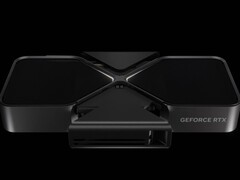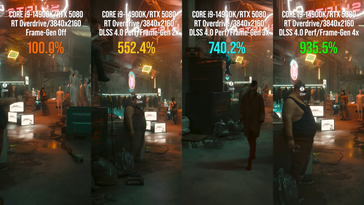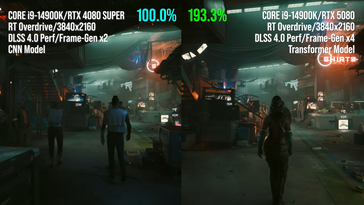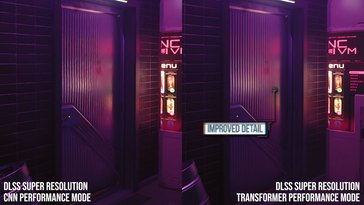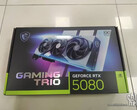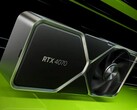Nvidia officially revealed the RTX 50 desktop GPUs at CES 2025 and the cards look pretty good, if Nvidia's claims end up being true. Arguably, the most enticing card in the RTX 50 lineup is the RTX 5080 with its $999 price and the promise of an incredible performance jump.
Giving us a first look at the DLSS 4 performance of the RTX 5080, Digital Foundry has now tested the card in Cyberpunk 2077 and compared the performance bump to the RTX 4080 Super.
RTX 5080 performance with DLSS 4 Frame Generation
Starting with the new 3x and 4x DLSS 4 Frame Generation, the RTX 5080 GPU sees a tremendous increase in performance according to Digital Foundry’s preliminary testing. In Cyberpunk 2077 running at 4K with RT Overdrive mode, DLSS 4 Performance, and 2x Frame Generation, the RTX 5080 can push 525% more frames, on average, than the native rendering without DLSS.
The delta increases to an astounding 725% with 3x Frame Generation and an even more impressive 913% with 4x Frame Gen. In other words, the 4x Frame Generation of DLSS 4 can increase the average FPS in Cyberpunk 2077 by more than 900%.
RTX 5080 vs RTX 4080 Super
Comparing the RTX 5080 to the RTX 4080 Super, DF reports that the RTX 5080, with DLSS 4 Performance and 4x Frame Generation, is 91% faster on average vs its predecessor with DLSS 4 Performance with 2x Frame Generation.
In the absence of any VRAM increase and price cut, the RTX 5080’s DLSS 4 performance increase over the RTX 4080 Super is the primary factor Nvidia is banking on to sell the card. Sadly, we don’t know how much the pure rasterization performance gain the RTX 5080 enjoys over the RTX 4080 Super. So, we’d have to wait and see for ourselves when we finally get our hands on the GPU.
DLSS 4 Frame Generation image quality improvements
Aside from the performance gain, DLSS 4 Frame Generation also brings a host of new improvements to the table. Per Digital Foundry, the image produced by DLSS 4 and its new Transformer model looks better than DLSS 3 with its Convolutional Neural Network model.
For instance, the DLSS 4 Frame Generation seems to have no ghosting, an issue that was persistent in the prior generation. Similarly, Ray Reconstruction, a DLSS 3 technique that enhances the quality of ray tracing, has also reportedly scene a marked improvement. Per DF, Ray Reconstruction in DLSS 4 is more stable and less prone to loss of detail.
Finally, Nvidia has also managed to somewhat smooth out the frame pacing issues associated with DLSS in the newest version. Thankfully, the increase in performance doesn’t bring a big jump in latency, as DF reports a latency hit of 57 ms vs 50 ms for the 4x vs 2x Frame Generation.
All in all, the RTX 5080 looks like a solid upgrade over the RTX 4080 Super. Only time, and incoming reviews, will tell how well the GPU is received though. We just hope that it is available at MSRP at launch and doesn't have the terrible launches that we’ve been accustomed to.




